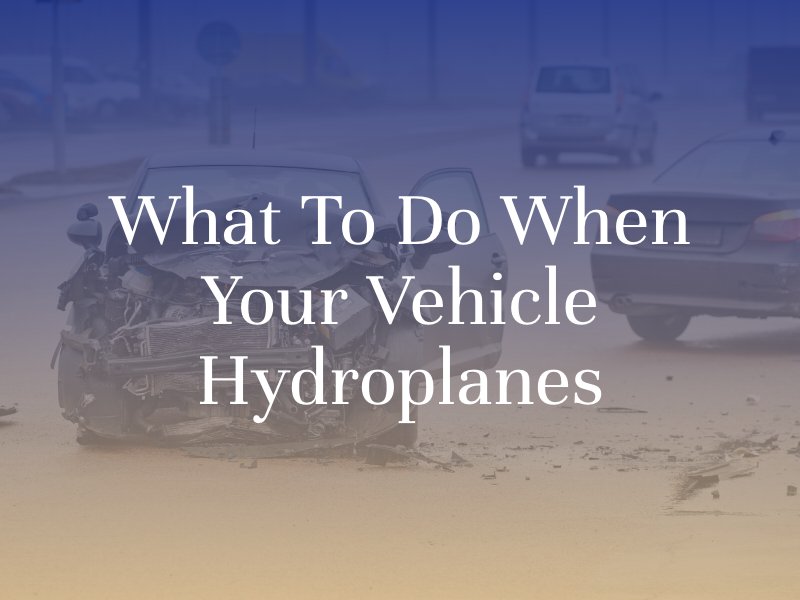
What to Do When Your Vehicle Hydroplanes
Colburn Law
Posted in Car Accidents,Safety Tips on November 15, 2022
Rainy days are not uncommon in Washington, which means that drivers often encounter slick roads. Wet driving conditions can cause many problems, including reduced visibility and a lack of steering control. In some cases, standing water can cause a vehicle to hydroplane or temporarily lose its grip on the road.
Hydroplaning can be a scary experience, even for the most seasoned drivers. If you often drive in wet conditions, it is critical to know what to do when your vehicle hydroplanes. Slowing down, staying calm, and keeping your tires in good condition can help you avoid this scary phenomenon.
How to Reduce the Risk of Hydroplaning
Hydroplaning happens when too much water accumulates between your tires and the road, causing you to lose traction. The risk of hydroplaning increases if your tire tread is worn down, the water is deep, or you drive over a certain speed.
You can avoid hydroplaning by reducing your speed and avoiding puddles or standing water. You should also turn off your cruise control; using this common vehicle feature can increase the chance that your vehicle will hydroplane.
To avoid hydroplaning in the first place, it is important to invest in high-quality tires and keep them in good condition. Keep your tires rotated, balanced, and properly inflated, and make sure to check the tread regularly. If the tires are worn below 4/32 of an inch, you should replace them.

What to Do When Hydroplaning Happens
Keeping your vehicle in good condition and driving carefully can help you reduce the risk of hydroplaning. However, this phenomenon can still happen no matter how safely you drive. If your vehicle starts to hydroplane, follow these steps:
- Slow down your vehicle, but do not slam on the brakes. Instead, slowly and calmly ease your foot off the gas pedal.
- Keep your steering wheel steady and gently turn in the direction that you are sliding. This action can help you regain control of your vehicle.
- If you do need to brake, lightly pump the pedal to avoid locking. If you have anti-lock brakes, you can pedal normally.
- Wait to feel your vehicle reconnect with the surface of the road. Once you feel this sensation, you have regained control of your vehicle.
- After the event, pull over in a safe location. Take a moment to calm down before starting to drive again.
What to Do If You Are Injured in a Hydroplaning Accident
A vehicle can hydroplane in an instant, which is why it is important to slow down, stay calm, and reconnect your tires with the ground as soon as it happens. However, not all drivers are careful on wet roads and can easily lose control of their vehicles. These individuals can cause serious accidents that result in severe injury and extensive property damage.
In the event of a hydroplaning accident, it is also critical to stay calm. Pull your vehicle over to a safe location if possible and check on your passengers. Call 911 to report the accident to the police and bring emergency services to the scene. Seek medical care as soon as you can, even if you do not feel injured.
Once you have received medical treatment, speak to a Washington car accident attorney as soon as possible. Your lawyer can assess your case and help you file an insurance claim or lawsuit against the driver who was responsible for your crash.



